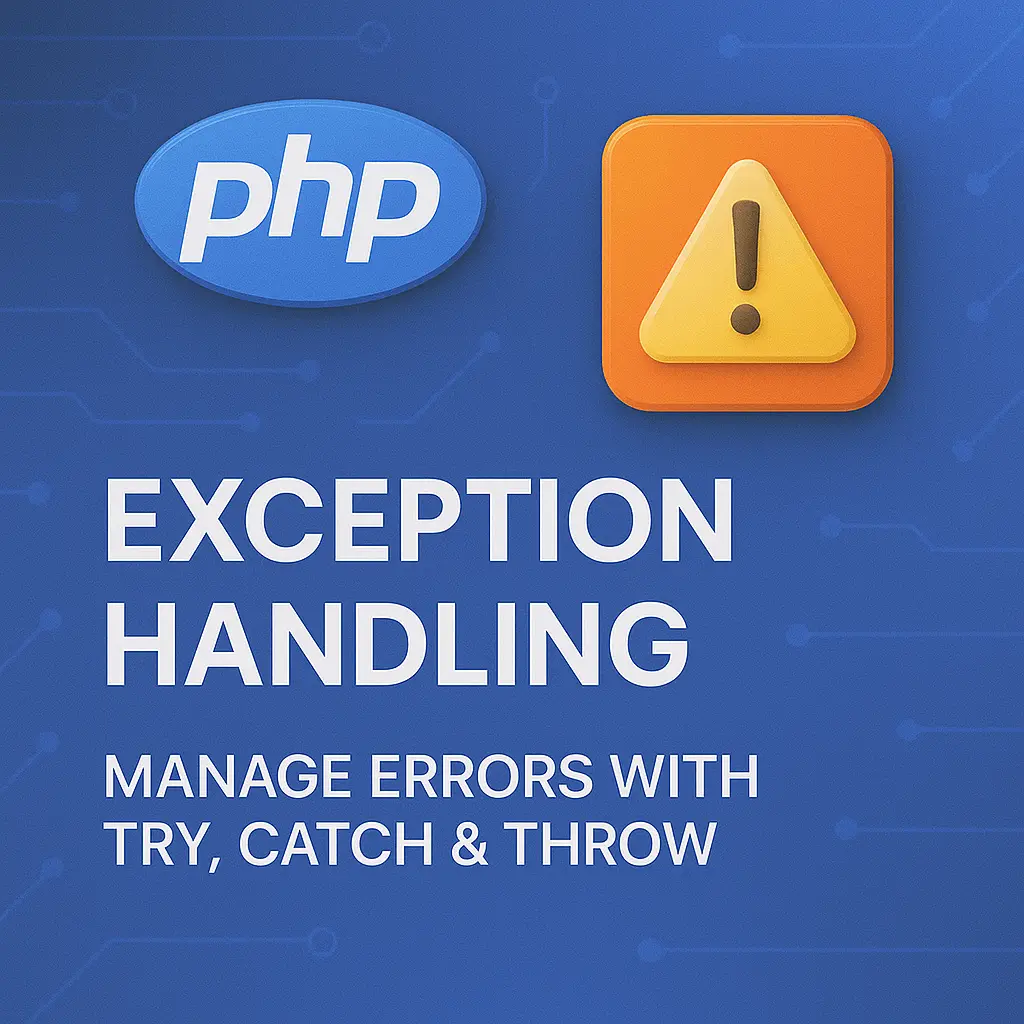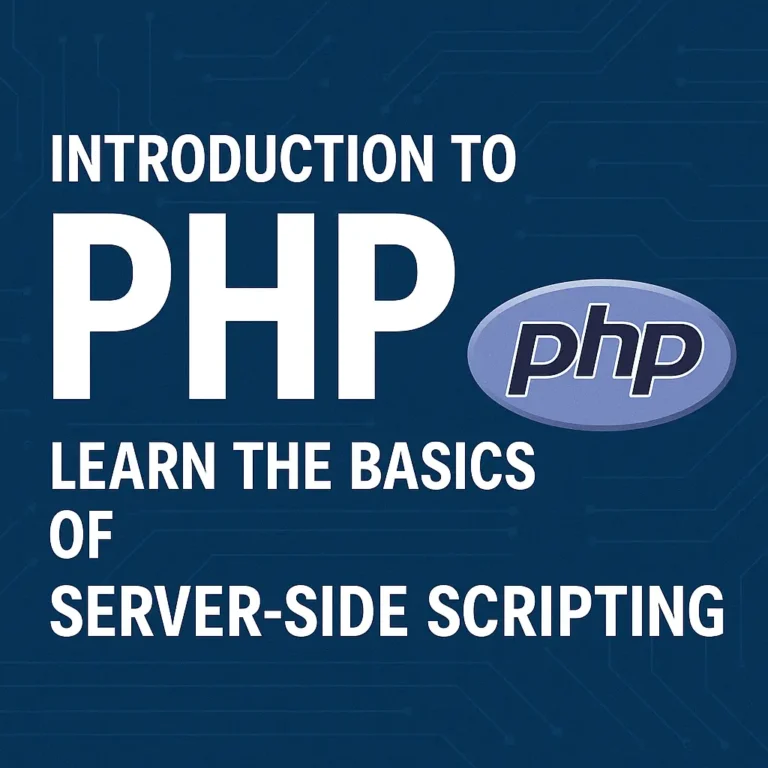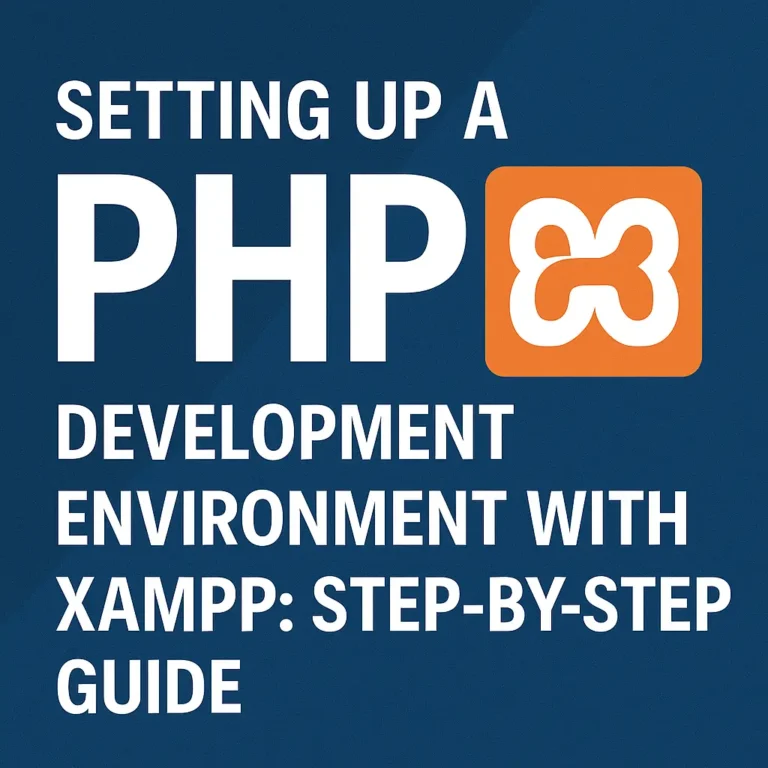In PHP, exceptions provide a mechanism for handling errors and exceptional situations in a structured and controlled manner. In this comprehensive guide, we’ll explore the basics of exception handling in PHP and discuss advanced techniques for creating custom exceptions. Through detailed explanations and practical code examples, you’ll learn how to harness the power of exception handling to build robust and resilient PHP applications.
Basics of Exception Handling
Exception handling in PHP involves the use of try, catch, finally, and throw keywords to manage errors and exceptional conditions. When an exceptional situation occurs within a try block, PHP looks for a corresponding catch block to handle the exception. If no appropriate catch block is found, the exception is propagated up the call stack until it is caught or results in a fatal error.
Basic Exception Handling Example
<?php
try {
// Code that may throw an exception
$result = 10 / 0;
} catch (Exception $e) {
// Handle the exception
echo "An error occurred: " . $e->getMessage();
}
?>
In this example, the try block contains code that may throw an exception (division by zero). If an exception occurs, the corresponding catch block handles the exception by printing an error message.
The finally Block
The finally block is optional and is executed regardless of whether an exception is thrown or caught. It is commonly used for cleanup tasks such as closing database connections or releasing resources.
<?php
try {
// Code that may throw an exception
$result = 10 / 0;
} catch (Exception $e) {
// Handle the exception
echo "An error occurred: " . $e->getMessage();
} finally {
// Cleanup tasks
echo "Cleanup tasks executed";
}
?>
In this example, the finally block contains cleanup tasks that are executed regardless of whether an exception occurs or is caught.
Custom Exceptions
PHP allows developers to create custom exception classes by extending the built-in Exception class. Custom exceptions can encapsulate specific error conditions and provide additional context or information about the exception.
Creating a Custom Exception Class
<?php
// Custom exception class
class CustomException extends Exception {
public function __construct($message, $code = 0, Exception $previous = null) {
// Call the parent constructor
parent::__construct($message, $code, $previous);
}
public function __toString() {
return __CLASS__ . ": [{$this->code}]: {$this->message}\n";
}
}
?>
In this example, we define a custom exception class CustomException that extends the built-in Exception class. The class constructor allows for custom error messages and codes to be specified when throwing the exception.
Throwing a Custom Exception
<?php
// Throwing a custom exception
function divide($dividend, $divisor) {
if ($divisor === 0) {
throw new CustomException("Division by zero is not allowed");
}
return $dividend / $divisor;
}
try {
// Attempt division
$result = divide(10, 0);
} catch (CustomException $e) {
// Handle the custom exception
echo "An error occurred: " . $e->getMessage();
}
?>
In this example, the divide() function throws a custom CustomException if the divisor is zero. The exception is caught and handled in the catch block, where an error message is displayed to the user.
Best Practices
Use Specific Exceptions: Define custom exception classes for specific error conditions to provide more meaningful error messages and context.
Catch Exceptions Appropriately: Catch exceptions at the appropriate level of granularity to ensure that errors are handled effectively and gracefully.
Provide Contextual Information: Include relevant information and context in exception messages to aid in debugging and troubleshooting.
Conclusion
Exception handling is a fundamental aspect of PHP development, allowing developers to manage errors and exceptional conditions in a structured and controlled manner. In this guide, we explored the basics of exception handling in PHP, including the use of try, catch, finally, and throw keywords. We also discussed advanced techniques for creating custom exceptions to encapsulate specific error conditions and provide additional context or information. By mastering exception handling techniques and following best practices, you can build robust and resilient PHP applications that gracefully handle errors and exceptional situations.
<?php
// Example PHP code demonstrating custom exception handling
class CustomException extends Exception {
public function __construct($message, $code = 0, Exception $previous = null) {
parent::__construct($message, $code, $previous);
}
public function __toString() {
return __CLASS__ . ": [{$this->code}]: {$this->message}\n";
}
}
function divide($dividend, $divisor) {
if ($divisor === 0) {
throw new CustomException("Division by zero is not allowed");
}
return $dividend / $divisor;
}
try {
$result = divide(10, 0);
} catch (CustomException $e) {
echo "An error occurred: " . $e->getMessage();
}
?>
This PHP script demonstrates the creation of a custom exception class CustomException and its usage to handle division by zero errors. If a division by zero occurs, a custom exception is thrown and caught, and an error message is displayed to the user.






